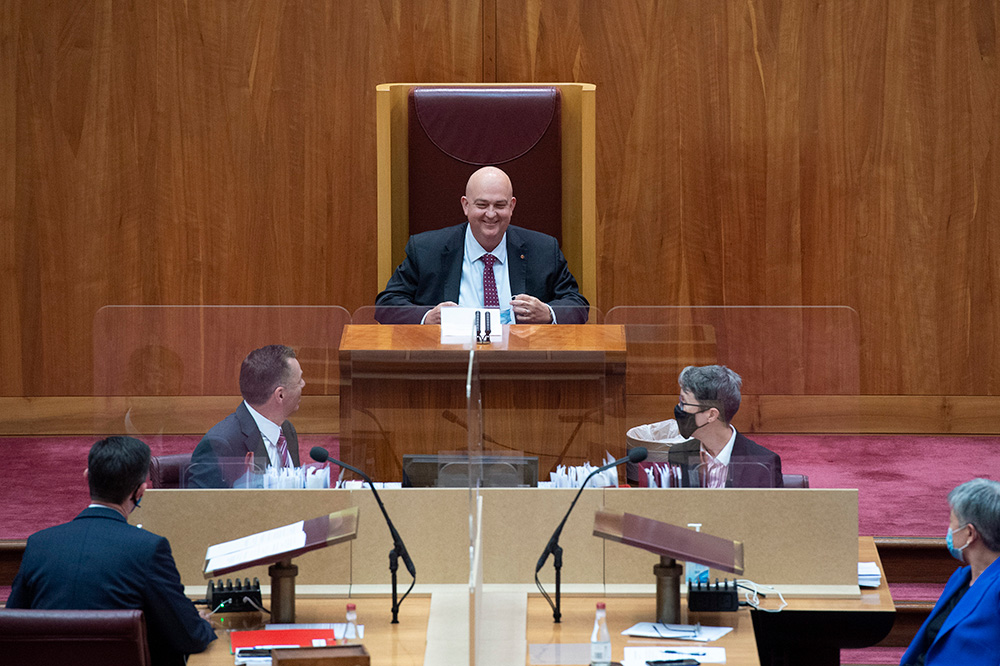12/01/2022
The President is the presiding officer of the Senate whose chief function is to guide and regulate the proceedings in the Senate. The President is also the spokesperson and representative of the Senate in dealings with the Governor-General, the executive government, the House of Representatives and other parliaments or foreign heads of state.
The authority of the office of the President is derived from the Senate and its first duty is to the Senate and senators, by upholding the institution and protecting its rights and privileges. Although the President, once elected, remains a member of a political party, in performing the duties of office, the President is expected to act in an impartial manner.
Duties of the Office
When the Senate meets, the President is responsible for the proper conduct of business in the Senate chamber. The President interprets the rules of the Senate (known as the Standing Orders), maintains order and decorum in the chamber, calls on senators to speak, and announces the results of formal votes.
When not in the Senate chamber, the President:
- has ministerial-like responsibility for the Department of the Senate and chairs the Senate Standing Committee on Appropriations, Security and Staffing
- works with the Speaker of the House of Representatives to exercise responsibilities in relation to the parliamentary precincts and the Department of Parliamentary Services, and in relation to the Parliamentary Budget Office.
The President's role as a presiding officer was highlighted during the COVID-19 pandemic, with the President and Speaker responsible for implementing COVID-safe arrangements for the Parliament.
Participation in the Senate
The President does not usually participate in debates. However, in accordance with section 23 of the Australian Constitution, they can vote along with other senators. This is to ensure all states have equal representation when votes are taken. In the event of a tied vote, a question is resolved in the negative which means that it is lost because a majority vote has not been achieved.
Choosing the President

President of the Senate, Senator the Hon Slade Brockman, on his election as Senate President, 18 October 2021 (Photo: AUSPIC)
All 76 senators in the Senate vote to elect the President. The election is conducted by a secret vote. The Senate recently elected the current President of the Senate, Senator the Hon Slade Brockman, on 18 October 2021.
Deputy President
The Senate also has a Deputy President, the second officer of the Senate who also serves as Chair of Committees. The Deputy President relieves the President during sittings and performs the duties of President during the President's absence. Stay tuned for the next ‘who's who in the Senate' as we will be spotlighting the Deputy President's role.
Want to know more about the President? Find out more here: